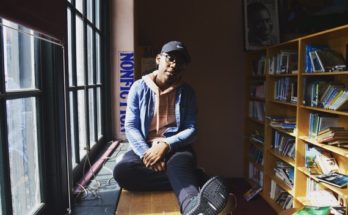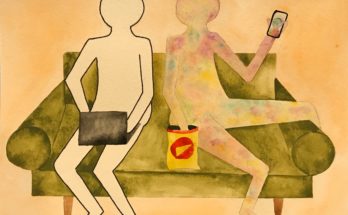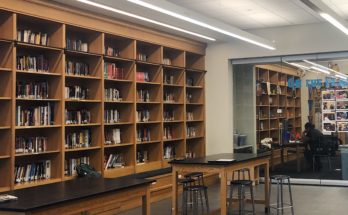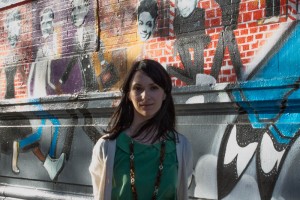
Shannon Browne still remembers receiving the call she had been dreading for weeks. It was around noon on March 20, 2012, just before her students’ lunch period at Believe Southside Charter High School in Williamsburg, Brooklyn. The New York State Board of Regents was officially informing Browne, the school’s principal, that Southside Believe’s charter was being revoked. The high school she helped to found in 2009 would close its doors forever at the end of the school year.
The petite 28-year-old brunette called an emergency advisory board session to break the news to the school’s 256 students before they saw it in the newspapers. She had talking points ready.
“It was upsetting to know it was final,” Browne said a year after the closure. But she said that the “students handled themselves remarkably well.” Many would later say that they had been hearing closure rumors long before that meeting.
Southside Believe’s final countdown began in September, 2011, when the Board of Regents put the school on probation. The Regents gave the school until June, 2012 to get itself in order and asked that it enact a formal, corrective plan of action by December, 2011.
Board of trustee issues, coupled with under-enrollment, financial issues and an investigation into the Believe High Schools Network Inc.’s CEO, Eddie Calderon-Melendez, led to the school’s shuttering.
Charters, which receive taxpayer funds, are governed by boards of trustees and operated by networks, in this case, the Believe High Schools Network. Believe Southside’s board of trustees was not in legal, working order. A board of trustees should have a minimum of five, qualified trustees; theirs had three. And without a full board, decisions about the school could not be made legally.
Enrollment was also a problem. The school was under-enrolled and in violation of charter law, which stipulates that schools must either be 10 percent above or below a charter’s enrollment target. Believe Southside’s charter stated it would begin with 100 students and increase its size by 100 students each year. It had 93 students in 2009-2010; by the 2011-2012 school year, it had 256, just shy of its target.
The school also had to sort out its application for tax exemption. Even, more important, the Regents cited serious fiscal mismanagement as a concern in the probation notice.
In December, 2011, the chair of the board of trustees, Marcenia Johnson, sent a letter to the Board of Regents detailing the challenges the school still faced and asking to surrender the school’s charter, effective at the end of the school year. A trustees’ vote approved this request, but then the trustees rescinded the request in February 2012.
Like their counterparts at the 49 other schools in New York City that were closing or phasing out in 2012, Believe Southside’s staff and students were forced into transition.
The really difficult thing, Browne said about the closure decision was that “it wasn’t anything the school itself was doing, it didn’t involve academics or things we had control over.”
While they hadn’t caused the problem, Believe Southside’s staff, students and their families would bear the brunt of the board and the network’s actions.
“I was the person who was supposed to be in charge and it happened under my watch,” said Browne. “I was watching things happen that I couldn’t fix and it was really difficult for me. I still felt really guilty, anyway.”
Originally from New Jersey, Browne had been living in New York City since she was 18. She studied English literature as an undergrad at New York University and got her master’s degree in English Education from there, too.
She came to Believe Southside Charter High School after working for two years as an English teacher at Williamsburg Charter High School. In her second year at Williamsburg, the Believe High Schools Network decided to expand and open Believe Northside and Southside. Browne’s name was tossed around to be Southside’s leader.
“I was worried most about how the parents would accept such a young school leader,” she said. Most of the staff, too, was in their late 20s. Luckily though, “the parents the first year really embraced us and I think we did a really good job building a strong parent culture.”
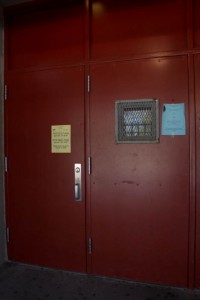
Browne and the rest of the small staff, whose work that first year was confined to a corner on the fourth floor of a school building it shared with M.S. 126, Williamsburg and Northside, made it a point to be in constant contact by phone with the parents and guardians of its 93-student strong founding classes.
It was that personal approach that Browne would tap into as she led the school through tougher times.
The day after Browne found out about the charter revocation, she started to work on the 24-page Closing Procedures Guide and Checklist she received from the New York State Education Department. One of the scariest tasks she faced was finding her students alternative schools to attend. The New York City Department of Education stepped in to help.
Representatives from the Office of Enrollment created a separate application period for Believe Southside students. They reached out to public schools with available spots and gave that list to Principal Browne.
While waiting for the list of schools, Browne recalls feeling “really stressed. I could not leave if that wasn’t taken care of.”
Once they had the list, the staff worked with parents, guardians and students to rank school preferences. They even held special nights at the school to help complete the paperwork. The Department of Education guaranteed that students would get a spot in one of their ranked schools. “I have to say, I don’t know how they did it, but they came up with a list of some really top tier schools and neighborhood schools,” Browne said.
Right before this process, the charter school severed ties with the Believe High Schools Network, whose CEO, Calderon-Melendez, was indicted in April for allegedly falsifying business records, tax fraud and grand larceny, according to a press release from the office of State Attorney General, Eric T. Schneiderman. The school contracted the Charter School Business Management to take over Believe High Schools Network’s role and help with the operation of the charter and administrative duties during the closeout. “I honestly think without them, I don’t know what would have happened,” said Browne.
“I was a pretty calm leader. I tried to be really calm in front of everybody,” she said, even though it was a stressful time and she was “angry about the way it happened, angry I couldn’t do anything.”
As students submitted paperwork to transfer and took important tests that would affect their higher education careers, she calmly emphasized that although the school was closing, grades still mattered.
The effects of the closing were not only felt within the building walls. Administrators at area Catholic schools, charter schools and public schools called to let Browne know of open seats, and even reached out with information on open professional positions for the staff, which was also in limbo. Browne had to find work, too.
If there was any bright spot, Browne says it’s that “we didn’t collapse; we didn’t have any chaos.” By June, all the students had an alternative place to go and continue their studies. It was particularly heartbreaking for Browne though to see her ‘babies,’ the members of the founding class move on, as she and they thought graduation would happen at Believe Southside next year.
And moving on, making a transition, was something that Browne would have to do that summer too. When she walked out the door of the school in late June, she was overcome by a wave of emotions: sadness, anger, relief, and exhaustion. She’d be transitioning back to teaching and a job as an English teacher at Harlem Village Academy in August.
Even with a year of distance from the ordeal: “I’m still dealing with some of the emotional effects of it; having something that started off really positive and really strong, and just watching it get really negative,” Browne said. “It’s still hard.”

